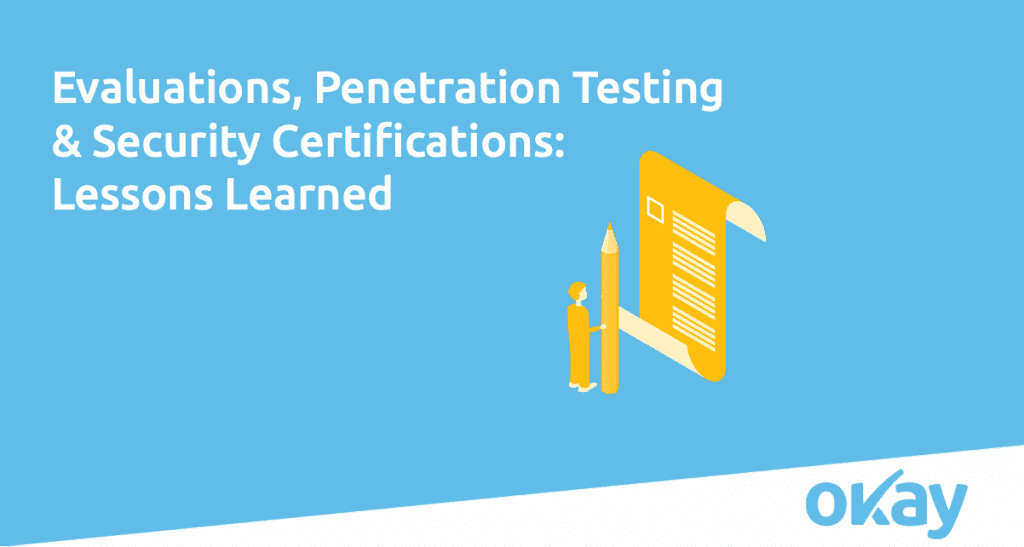
In the world of IT and Cybersecurity, security evaluations are an important measure of a company’s commitment to providing products with exceptional quality. Although requirements differ across the globe, European security evaluations are now required under various legislation, including the Payment Services Directive 2 (PSD2). As part of Okay’s evaluation process, we worked with a consulting and auditing company, PROSA Security, which modelled protocols and data flow through our systems. Based on this model, we could automatically see how encryption protected different assets, and whether we made any mistakes with our implementation.
Penetration testing is a totally different process. Also known as ethical hacking, penetration testing is a fake cyberattack used to identify a system’s weaknesses and strengths regarding how well it does or does not protect its features and data. The partner we chose for our penetration testing, YesWeHack, facilitates the connection between companies and white-hat hackers who are paid bounties if they manage to break the solution’s security. When it came time to test Okay, we first defined a set of bounties before inviting a set of hackers to try to break a “hackme” system.
Security evaluations and penetration testing are ultimately useful and necessary tools when trying to pinpoint product issues.While the formalised method used by security evaluators can be handy in finding logical errors and lack-of-documentation, the practical approach used by security testers motivated by bounties can help you find the bugs in your implementation that were originally missed.
Read the full article at okaythis.com/blog.
Who is Okay?
Okay is the fully PSD2 compliant Strong Customer Authentication platform that provides transaction and authentication security to apps, shielding the entire authentication process from any threats. We help all issuers, remittance services, and e-wallet providers comply with PSD2’s SCA requirements to deliver multiple authentication methods, including biometrics and strong security mechanisms at the point of transaction. Want to get to know us better? Visit okaythis.com.
Log in to access complimentary passes or discounts and access exclusive content as part of your membership. An auto-login link will be sent directly to your email.
We use an auto-login link to ensure optimum security for your members hub. Simply enter your professional work e-mail address into the input area and you’ll receive a link to directly access your account.
Instead of using passwords, we e-mail you a link to log in to the site. This allows us to automatically verify you and apply member benefits based on your e-mail domain name.
Please click the button below which relates to the issue you’re having.
Sometimes our e-mails end up in spam. Make sure to check your spam folder for e-mails from The Payments Association
Most modern e-mail clients now separate e-mails into different tabs. For example, Outlook has an “Other” tab, and Gmail has tabs for different types of e-mails, such as promotional.
For security reasons the link will expire after 60 minutes. Try submitting the login form again and wait a few seconds for the e-mail to arrive.
The link will only work one time – once it’s been clicked, the link won’t log you in again. Instead, you’ll need to go back to the login screen and generate a new link.
Make sure you’re clicking the link on the most recent e-mail that’s been sent to you. We recommend deleting the e-mail once you’ve clicked the link.
Some security systems will automatically click on links in e-mails to check for phishing, malware, viruses and other malicious threats. If these have been clicked, it won’t work when you try to click on the link.
For security reasons, e-mail address changes can only be complete by your Member Engagement Manager. Please contact the team directly for further help.